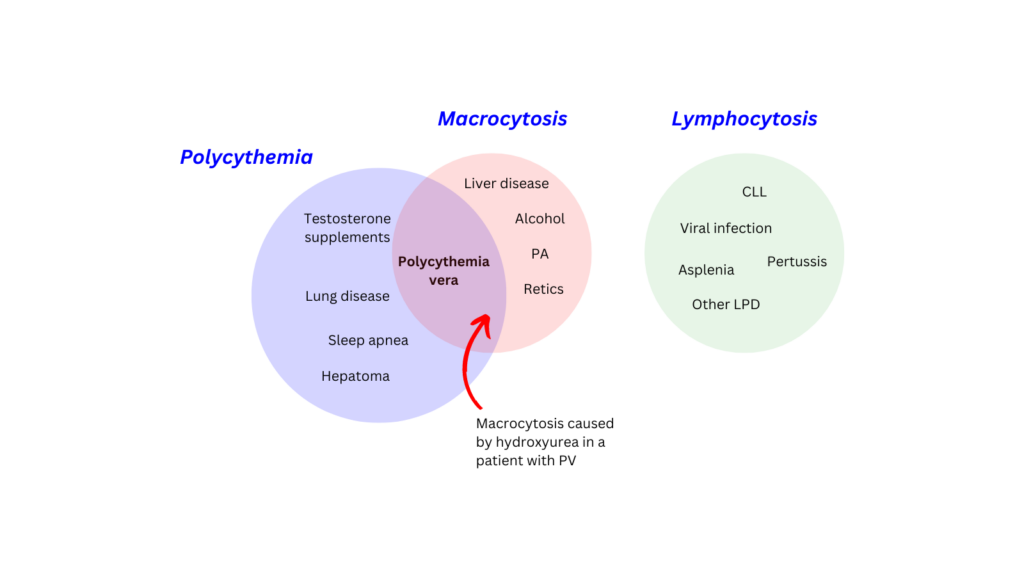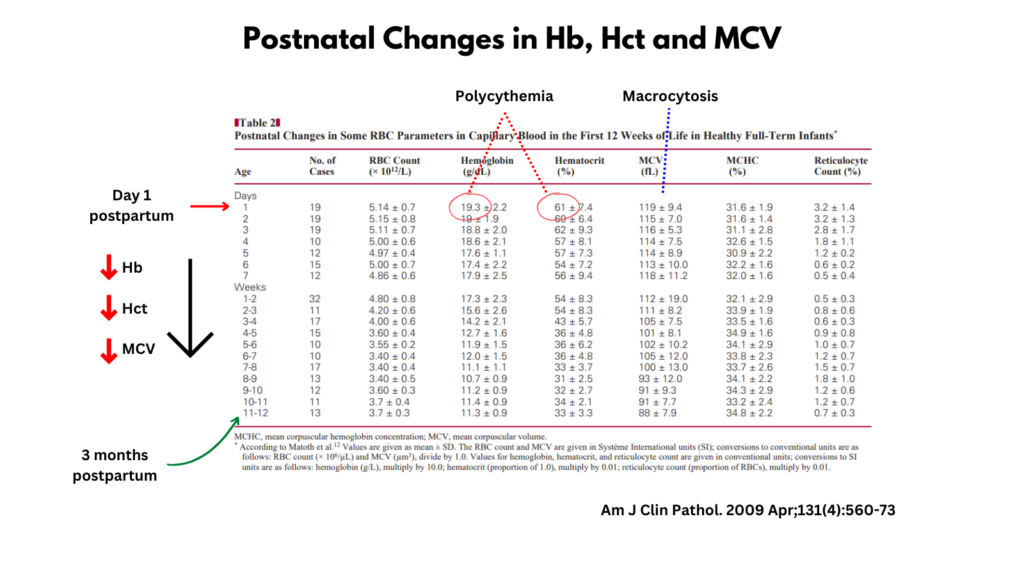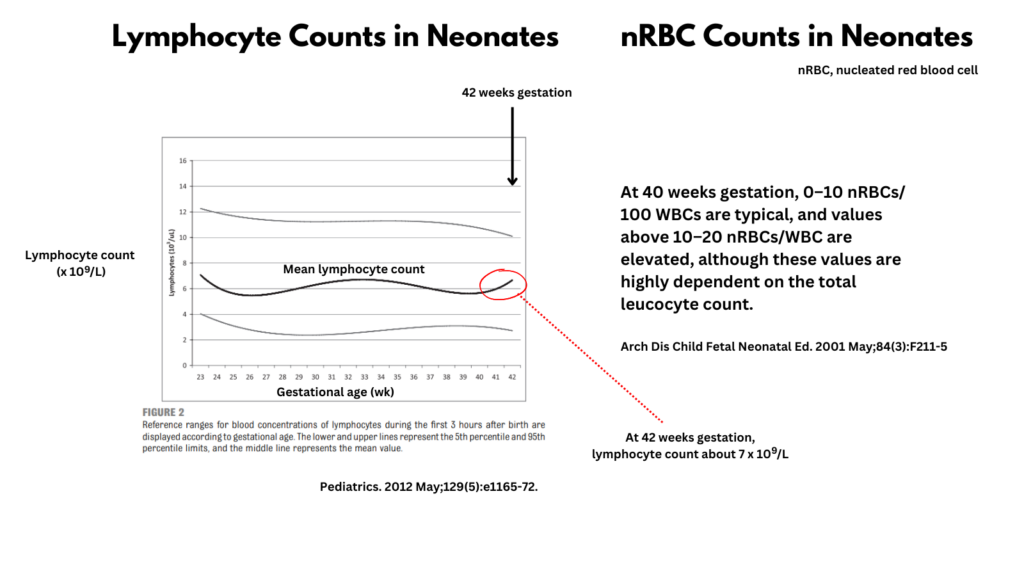Unknown CBC
Here is a complete blood count (CBC) from the tweet:

If you are not familiar with the cutoffs for lower-than-normal and higher-than-normal white blood cells (WBCs) and WBC subsets in adults, it is helpful to carry a cheat sheet with you, like the following:
| White cell subset | Cytosis (increased) | Cytopenia (decreased) |
|---|---|---|
| Total white cells | >11 x 109/L | <4.4 x 109/L |
| Neutrophils | >7.7 x 109/L | <1.5 x 109/L |
| Lymphocytes | >3.5 x 109/L | <1.5 x 109/L |
| Monocytes | >0.8 x 109/L | <0.2 x 109/L |
| Eosinophils | >0.35 x 109/L | <0.04 x 109/L |
| Basophils | >0.1 x 109/L | <0.01 x 109/L |
If you are not familiar with the cutoffs for lower-than-normal and higher-than-normal white blood cells (WBCs) and WBC subsets in adults, it is helpful to carry a cheat sheet with you, like the following (patient results in blue)!
| White cell subset | Cytosis (increased) | Cytopenia (decreased) |
|---|---|---|
| Total white cells | >11 x 109/L | <4.4 x 109/L |
| Neutrophils | >7.7 x 109/L | <1.5 x 109/L |
| Lymphocytes | >3.5 x 109/L | <1.5 x 109/L |
| Monocytes | >0.8 x 109/L | <0.2 x 109/L |
| Eosinophils | >0.35 x 109/L | <0.04 x 109/L |
| Basophils | >0.1 x 109/L | <0.01 x 109/L |

What is the most likely diagnosis among the following?

There are two ways to approach a complete blood count like this:
- Use pattern recognition (type 1 thinking) to arrive at an overarching “spot” diagnosis.
- Start with one abnormal lab value, work through the differential diagnosis of that result and then see whether/how the differential diagnoses of the other abnormal lab tests intersect with it and with each other (type 2 thinking). For example:
- Start with polycythemia, whose differential diagnosis includes:
- Polycythemia vera
- Lung disease
- Smoking
- Testosterone supplements
- Sleep apnea
- Any renal disorder with space occupying lesion
- Hepatoma
- Leiomyomatoma
- Cerebellar hemangioblastoma
- Now consider macrocytosis, whose differential diagnosis includes:
- Elevated reticulocytes
- Vitamin B12 or folate deficiency
- Medications, including hydroxyurea
- Liver disease
- Alcohol
- Hypothyroidism
- Plasma cell dyscrasia
- Primary bone marrow conditions
- Check for intersecting conditions:
- Patient with polycythemia vera being treated with hydroxyurea
- Now see whether you can fit in the rest of the abnormalities, for example lymphocytosis. The differential diagnosis of an elevated lymphocyte count does not neatly tie in with that of polycythemia or macrocytosis. So, as much as we like to hang our hat on one diagnosis, we might have to invoke a second process here. Perhaps the patient has polycythemia vera and chronic lymphocytic leukemia.
- Start with polycythemia, whose differential diagnosis includes:


What if you were told that the above CBC is perfectly normal and that we don’t need to looking for a disease or pathological condition?
OK, so this was a tricky case… and one whose answer is most accessible by pattern recognition! It turns out that the complete blood count and white blood differential from neonates are quite different from those of adults:


By adult standards, then, neonates have leukocytosis, polycythemia, macrocytosis and lymphocytosis with increased nucleated red blood cells. But of course, we should refrain from using such terms to describe what is perfectly age appropriate. The important point is that whether we are dealing with different stages in the life cycle, different sexes, and/or different ethnicities, we must adjust the normal ranges accordingly.


